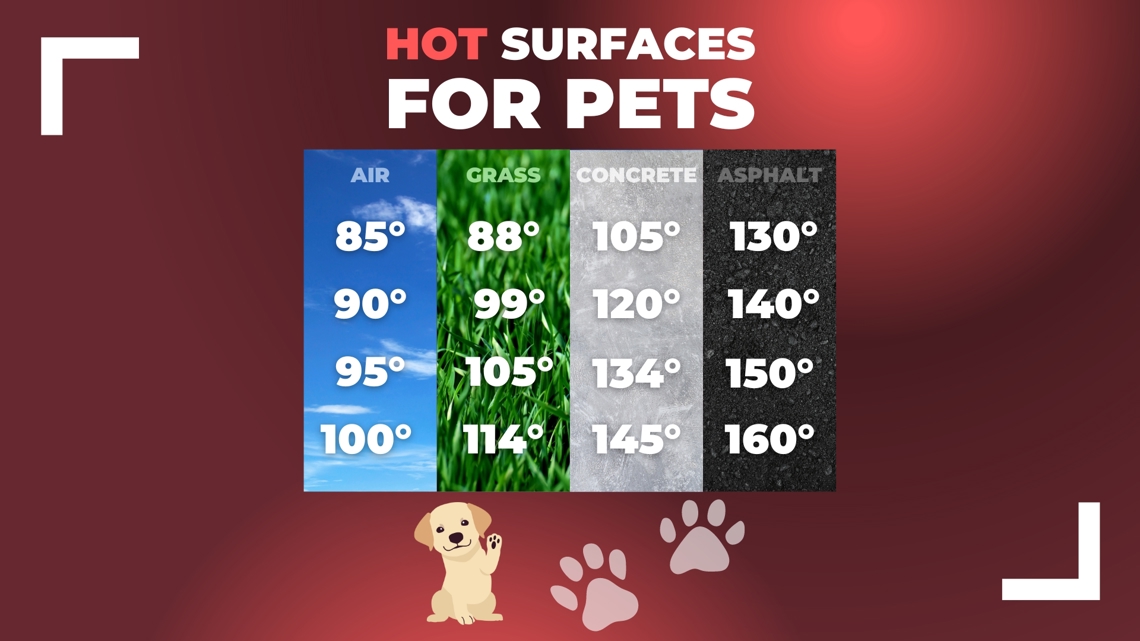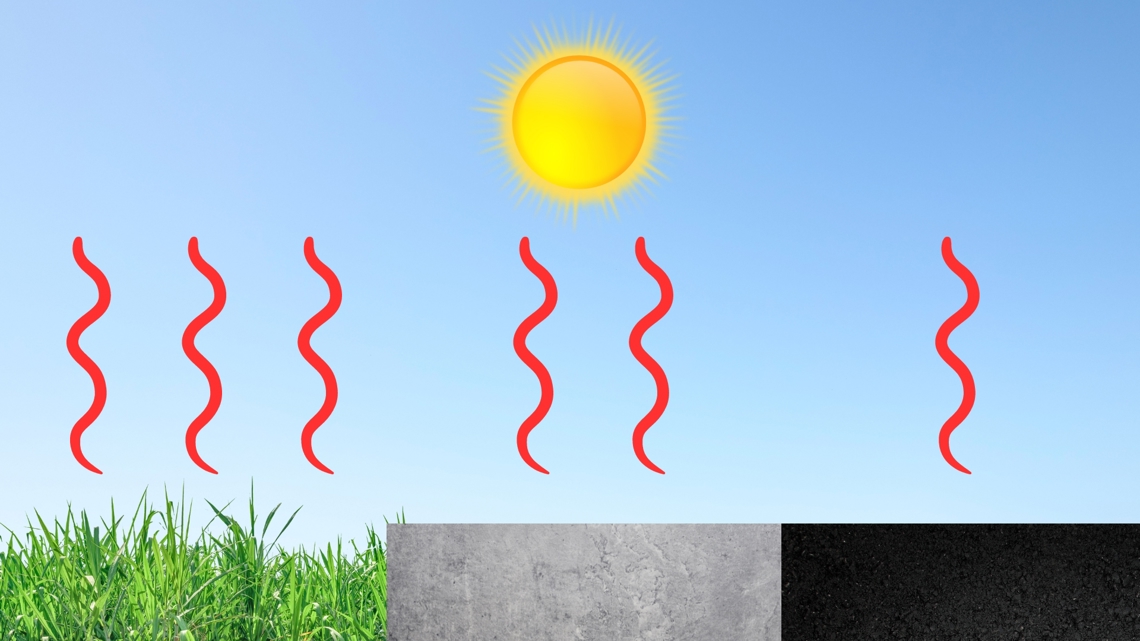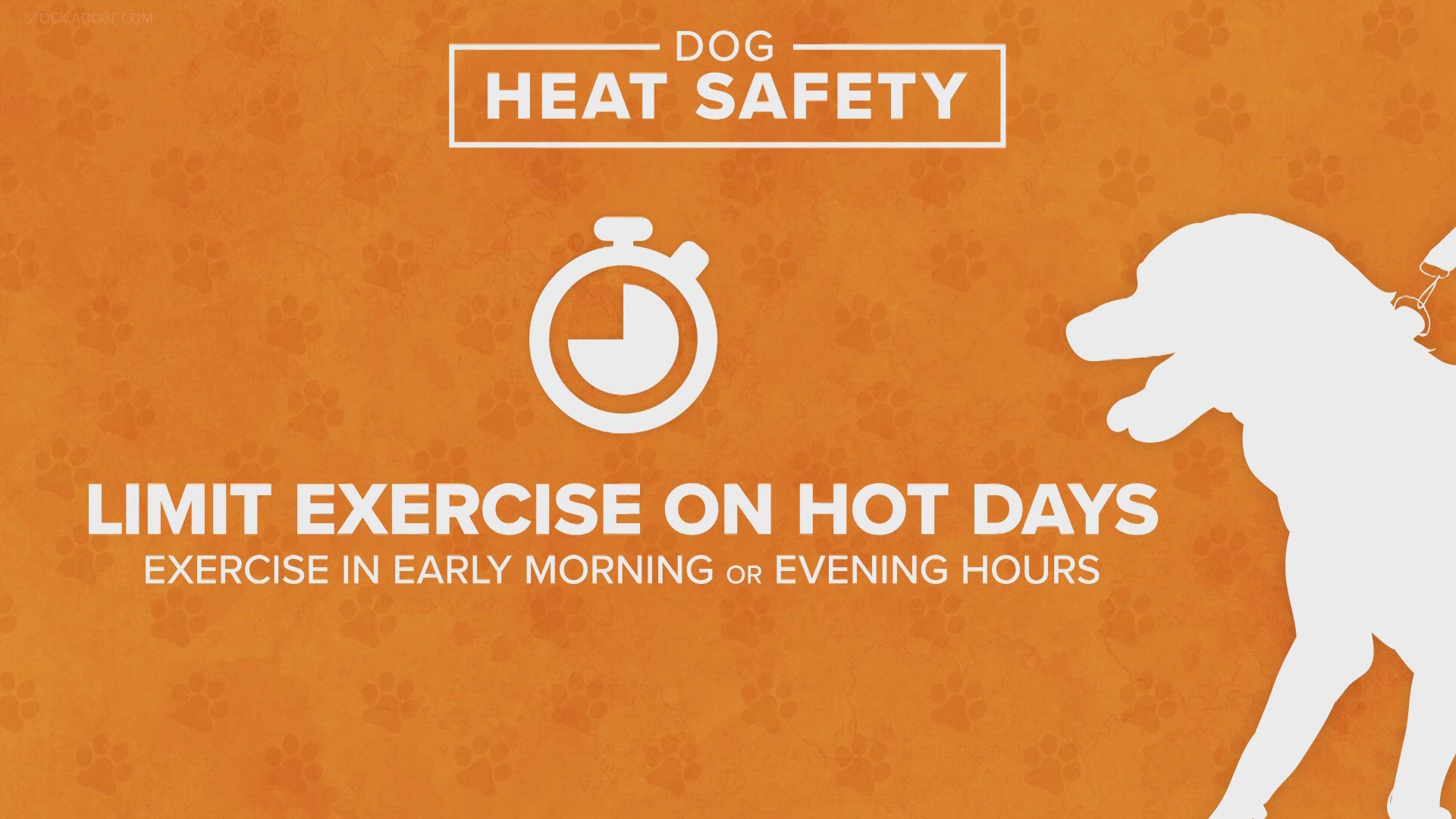INDIANA, USA — It is turning hot, humid, and miserable across much of the country. Heat waves move in and skyrocket air temperatures to the 90s and 100s. However in direct sunlight, the ground is much hotter than the air. Be careful going on walks with your pets as the ground can easily be well over 120 degrees, which can burn their paws.
How hot is it about to get? Tap HERE for the latest hour-by-hour temperature forecast.
Air is a poor container for heat, however ground surfaces like grass, concrete, and asphalt can hold a lot of heat. Asphalt can get the hottest.


How hot can it be to burn your pet's paws?
A general rule of thumb is that if you cannot touch the ground with your hand for more than 7 seconds, it is too hot for your pet.
If the ground temperature is 120 degrees, a pet's paw can burn in a couple minutes.
If the ground temperature is 140 degrees or higher, a pet's paw can burn in less than a minute.
Why the big difference?
Different surfaces absorb and release heat at different rates. Some of it is based on a surfaces albedo (how reflective it is of UV radiation), and how much water is in a surface. The sun doesn't heat the air first. It heats the ground and then heats the air.
(Note: the red waves are representative of heat being released from the surface, back into the air.)


- Grass: A lawn still gets hotter than the air, but not by a ton (relatively). Much of the heat is released back into the air. Plus their is more water content in grass, and in plants in general. This helps keep plants a bit cooler. However turf can get very hot. It's fake. It doesn't have water. Turf can get as hot as concrete.
- Concrete: Concrete still releases some heat, but it also retains a lot too.
- Asphalt: Asphalt holds a lot more heat, somewhat thanks to its darker color. Heat is still released, but most of the heat remains trapped in the asphalt. That's why it is one of the hottest surfaces, similar to metal.
— 13News Meteorologist Matt Standridge

